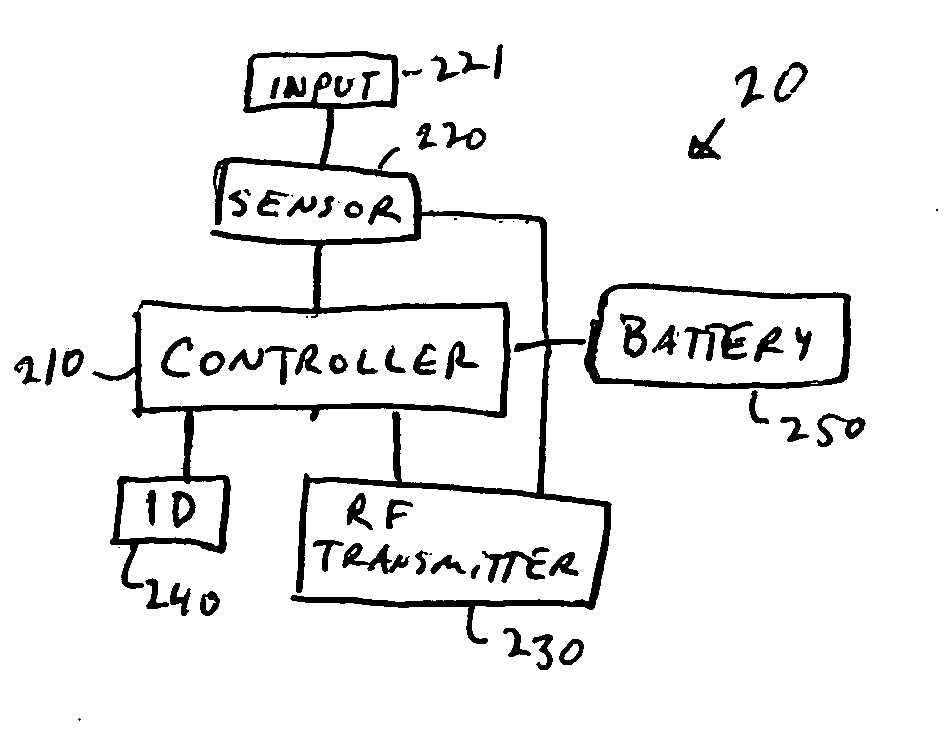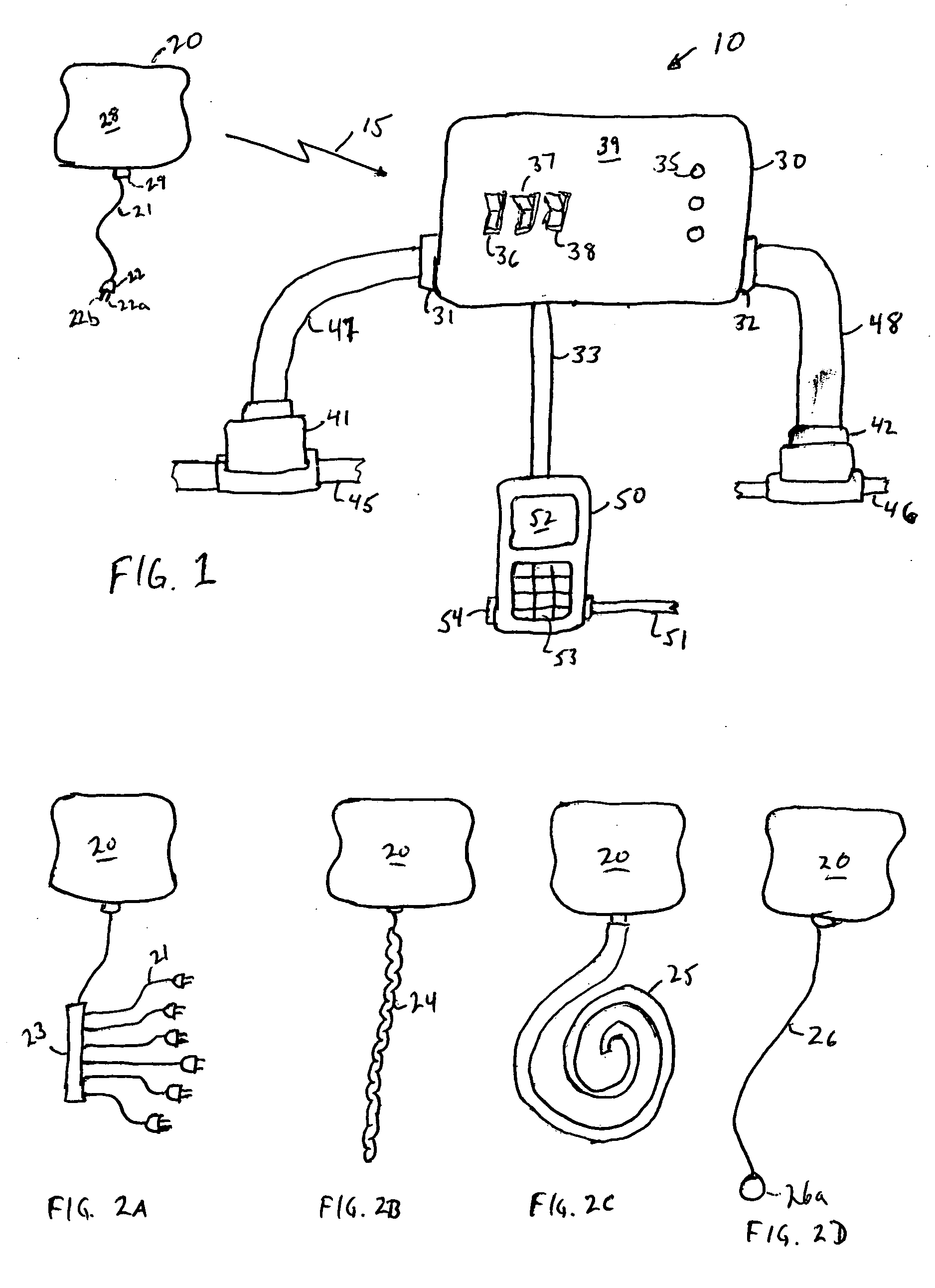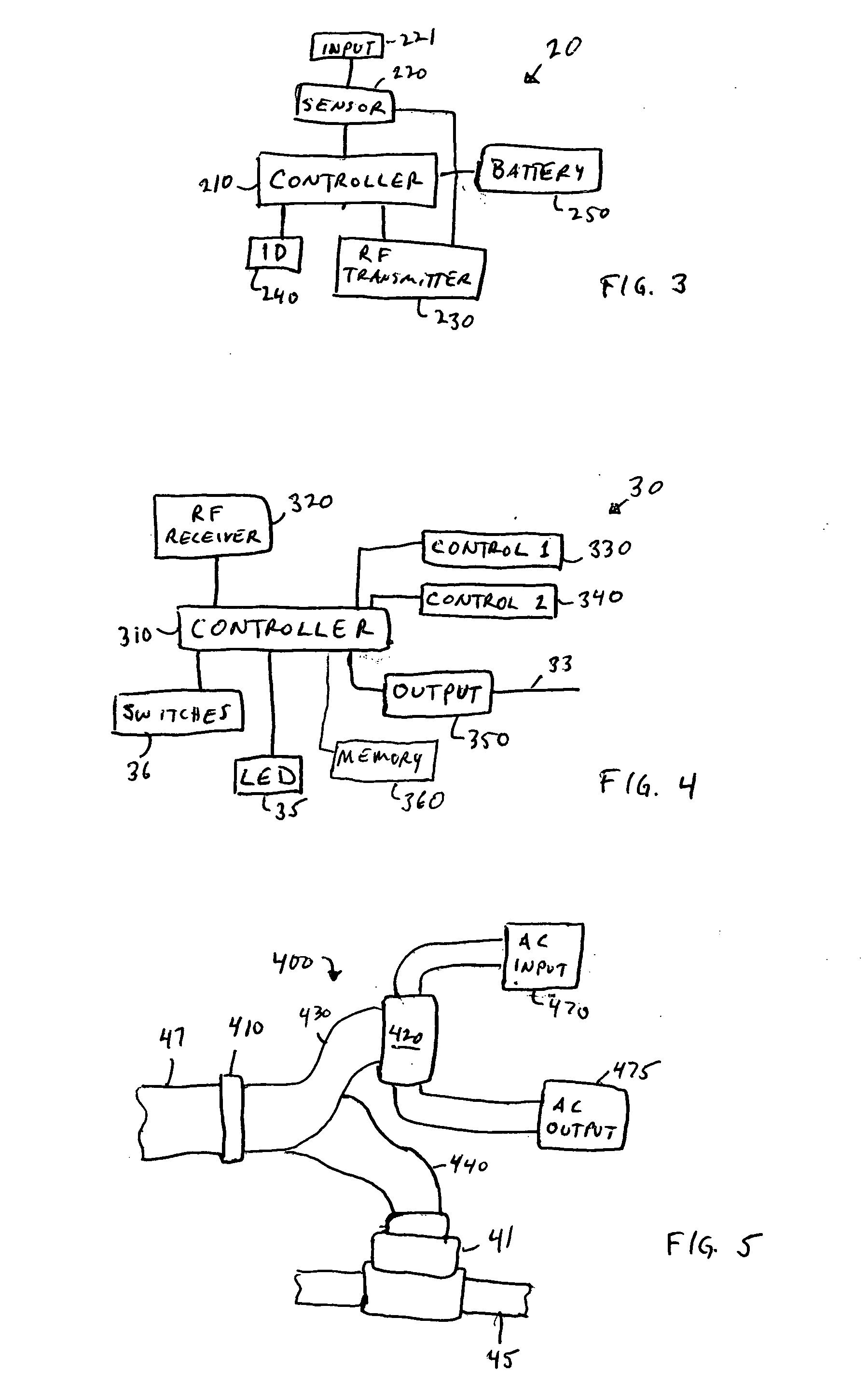Automated system for detection and control of water leaks, gas leaks, and other building problems
a technology for automatic system and water leak detection, applied in the direction of fluid leakage detection, fluid tightness measurement, instruments, etc., can solve the problems of undesirable water, gas or other substances entering the building, occupants' health hazards, and parts of these networks that require periodic maintenan
- Summary
- Abstract
- Description
- Claims
- Application Information
AI Technical Summary
Benefits of technology
Problems solved by technology
Method used
Image
Examples
Embodiment Construction
[0031] The present invention is a “smart” system allowing multiple possible responses to detection of leaks. In prior art systems, only a single prescribed response was possible. The response could include multiple actions, such as activating an alarm and shutting off a valve, but such systems could not selective perform actions. Thus, prior art systems were limited to implementations which protected against a single type of leak. Such a system cannot provide the flexibility necessary for a complete protection system or for multiunit buildings. The present invention provides greater flexibility through selection of responses based upon the type and location of detected leaks.
[0032] According to an embodiment of the invention illustrated in FIG. 1, the system 10 includes two types of devices, a plurality of sensors 20 (one shown) and a controller 30. The sensors 20 are placed at locations of possible leaks. The controller 30 is placed remotely from the sensors and preferably at loca...
PUM
 Login to View More
Login to View More Abstract
Description
Claims
Application Information
 Login to View More
Login to View More - R&D
- Intellectual Property
- Life Sciences
- Materials
- Tech Scout
- Unparalleled Data Quality
- Higher Quality Content
- 60% Fewer Hallucinations
Browse by: Latest US Patents, China's latest patents, Technical Efficacy Thesaurus, Application Domain, Technology Topic, Popular Technical Reports.
© 2025 PatSnap. All rights reserved.Legal|Privacy policy|Modern Slavery Act Transparency Statement|Sitemap|About US| Contact US: help@patsnap.com



